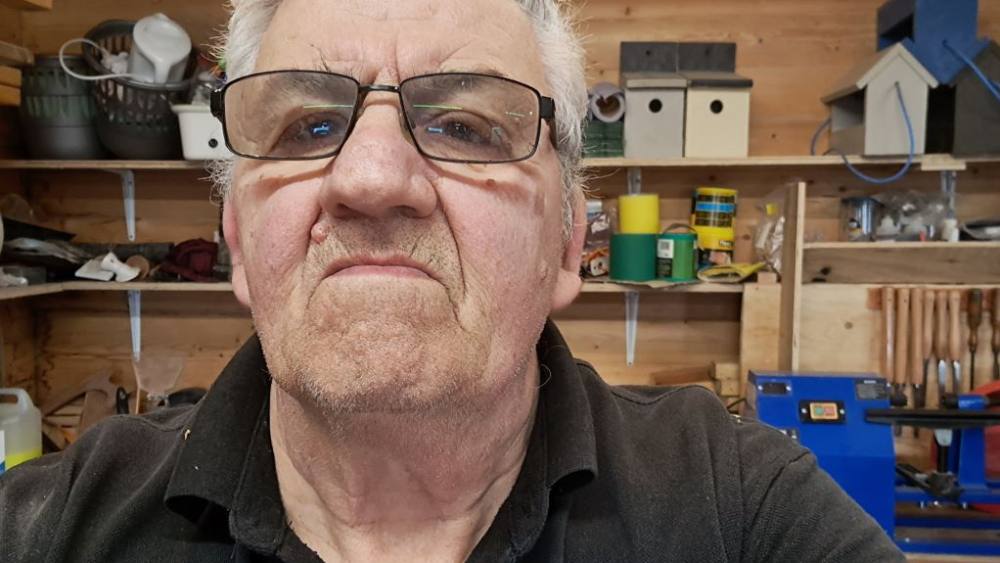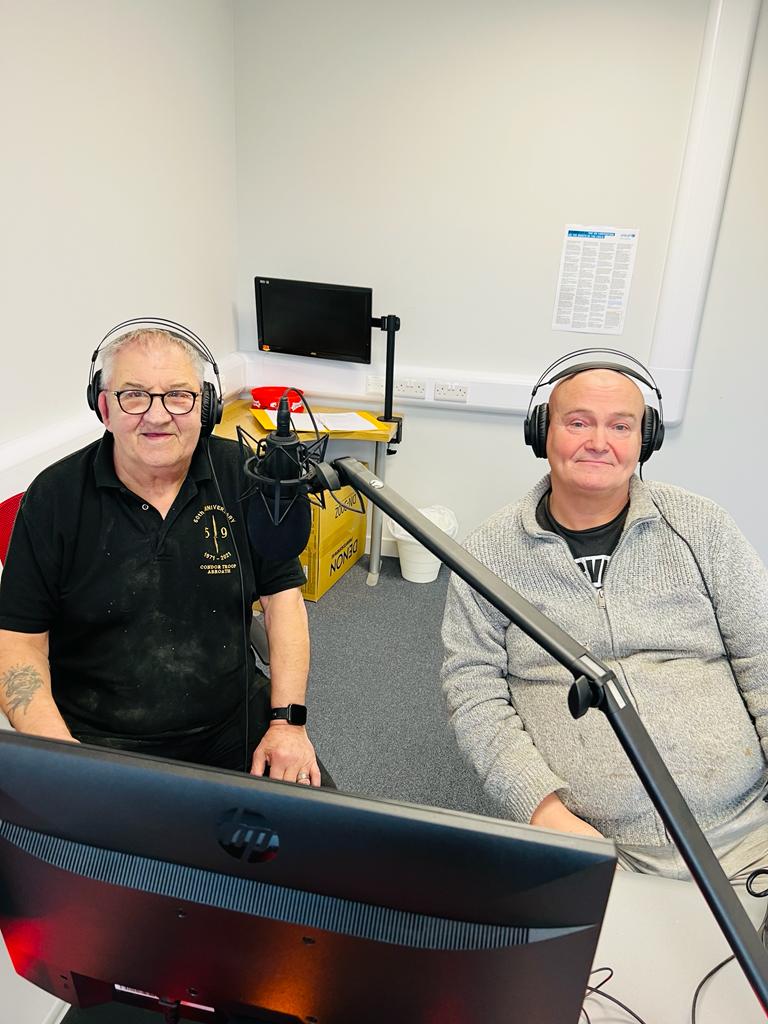72-years-young veteran Ray Elliott shares his journey from Royal Engineer Commando with mountain and artic warfare training to Shotts Shedder and mentor and everything in between.
Born in 1950 into the family haulage and scrapyard business, Ray did not need toys – he was the envy of many kids as he got to play and help cut up real tanks! At age nine, after being badly attacked by a local for being a Romany Gypsy, he was then trained by a WW2 Commando to defend himself. Leaving school at 14, he began an apprenticeship as a Heavy Diesel Plant Fitter with McAlpine’s in Hayes, Middlesex and for five years got to work with bulldozers and cranes on building sites.
Ray said: “Following my apprenticeship after school, I moved to a concrete factory making prefabricated building sections as a Plant Fitter. My family then wanted to train me to take over the family business, something I really did not want to do, so I rebelled and joined the Royal Engineers at Cove, six weeks of drill and using the self-loading rifle (SLR) followed by trade training driving a Land Rover and a 4-tonne lorry.
“After 18 weeks, I was posted to Osnabruck in Germany (BAOR – British Army of the Rhine). We lived in confined accommodation with zero privacy. I applied to join the Royal Engineer 9 Parachute Squadron with a two-year wait and got my head down and trained hard but unfortunately, trouble and jealousy seem to follow me around and a fight resulted in me being kicked out of Germany, luckily avoiding prison.
“I had to go to Chatham for trade training and was put on an Engine Fitters’ course, usually six-months long. I was given 12 weeks to pass, I tried to drag it out, but very quickly got bored. After six weeks, I entered the training room and told the trainer to sit down and watch. Within a few hours, I had stripped the engine, re-built it and put it on the engine test bed. To say the trainer was amazed is an understatement.
“After undertaking more commando training – I was the only one out of 24 Engineer hopefuls to pass. I then joined the new Condor Troop and moved to Arbroath to support 45 Royal Marine Commando Group serving NATO at the end of the Cold War with Russia, this was a Mountain and Arctic Warfare Group.
“We climbed up 700ft mountains, abseiled down headfirst at high speed and learned to casevac (casualty evacuation) a wounded soldier up and down mountains. Arctic warfare took your breath away, temperatures around minus 24C, skiing down a mountain would go to minus 60C.
“Our first trip was purely survival skills, sleeping in 10-man tents at minus 28C, skiing with 60lb packs into a hole cut in a frozen lake. Get the pack off, get the skis off, say your name, rank and number then use the ski poles to get out and start running. Just four minutes in that water could kill you, so running was required to warm the body up – at least five miles of running.
“Then, Northern Ireland in 1971 was brutal – our job was to attend to bombings, get the people out first, then the walking wounded, then the dead, or just pieces of bodies. We had to check the building structure and make it safe or pull it down whilst being shot at, petrol bombed or stoned. This experience teaches one to stay focused on the mission ahead.
“Build the camaraderie you miss and help set up a Men’s Shed using military know how.”
Ray Elliott, Shotts Shedder
“In my personal time over the years, and much more since my retirement at 69, I have enjoyed making small models from matchsticks in my own shed and also doll houses which I donate to local toddler groups. After recovering from Covid, I was asked by a charity in Shotts – the next village to me – to call in for a chat. They had seen photos of one of the dolls houses that I had made and asked if I could make their currently closed Men’s Shed work. My initial thoughts were that it was just a place for older men to drink coffee and chat, how wrong I was.
“I had a peek in the Men’s Shed at Shotts, and it was sad to see it empty except for some birdhouses and a couple of pieces of machinery. I got to work, locating a nearby factory that had pallets left outside for people to take. Now we had some wood. A new building behind the Shed supplied additional timber and I fitted two under-bench vices, put up shelving and brought the large table saw and Mitre saw into use.
“I then received permission to strip the old fence slats around the community hall and used the wood to start producing garden planters. In no time at all, previous members started returning, including a group of lads with learning disabilities and I started to teach them basic woodwork and they helped make the planters.
“When the previous woodworker Simon visited, his face was an absolute picture as he stood at the door amazed at what had been achieved. Six months on, this man is now full of confidence and we make an amazing team. We have produced many items to generate Shed funds and even encouraged an 86-year-old ex-Carpenter to join us. I am not the ‘boss’ but utilising my military skills and background, I tend to fall into a leader/mentor role that I thoroughly enjoy.
“My perception of Men’s Sheds has really changed – they are vital and effective tool in our communities. We are now a fully operational Shed offering activities and skills experience including general woodwork, painting, basic carpentry, plumbing and soon we will cover electrics like how to wire a plug and change a socket.
“The Shed is a platform to make friends, relax in each other’s company, just sit and chat or get involved, there is no pressure. They can make a project of their choice, or we can give them a project to do with full support, in a helpful manner, not in an authority manner. The charity hall next door also offers yoga, circuit training and much more. Jointly, we are encouraging members of our community to get out of the house and come do some exercise within good company.
“As a veteran, I fully support the Men’s Sheds model as a worthwhile adventure. Sheds are reaching out to and supporting all men from all backgrounds. With the SMSA always there in the background to offer support, help or advice, anyone with a pro-active nature can help set up a Shed in their locality and encourage others to get involved.
“For all the veterans out there, I urge you to get involved in the Men’s Sheds Movement. Build the camaraderie you miss and help set up a Men’s Shed using military know how. Pull up some sandbags and tell your stories to people, they will hang on your every word. YOU can make a BIG difference in people’s lives and it can help with yours too.”

